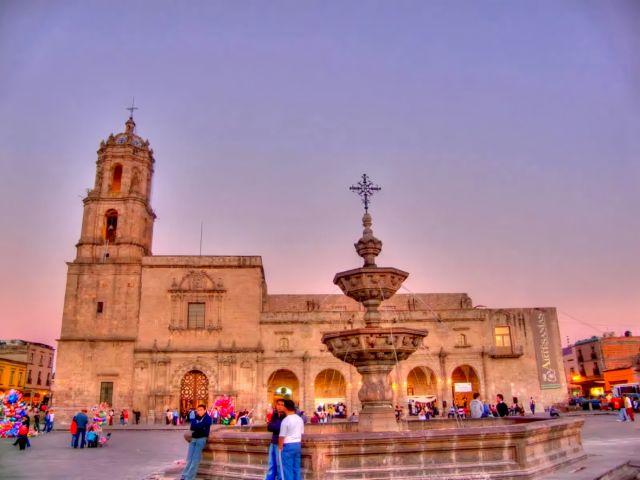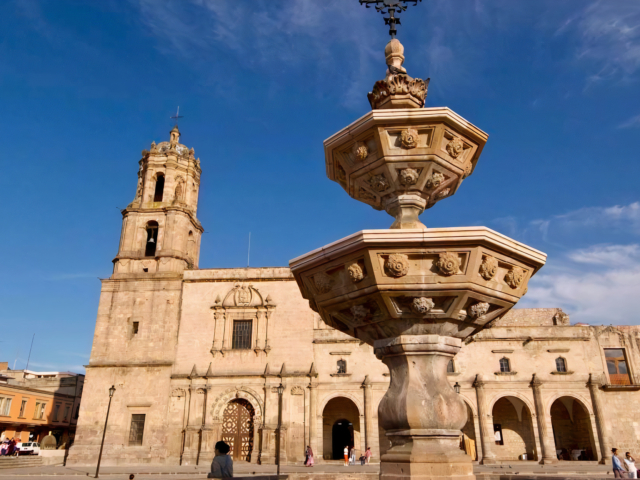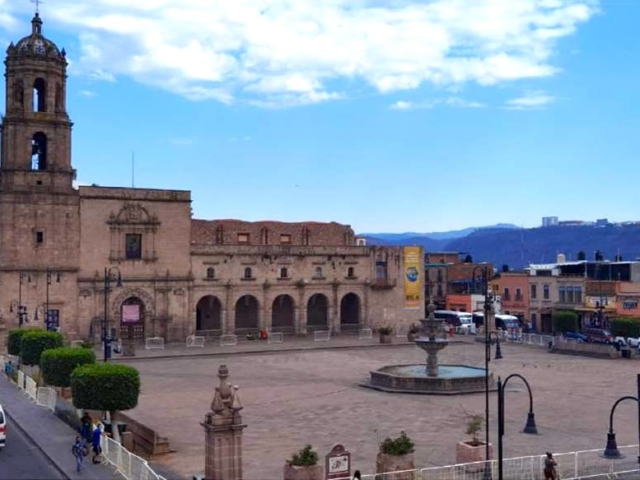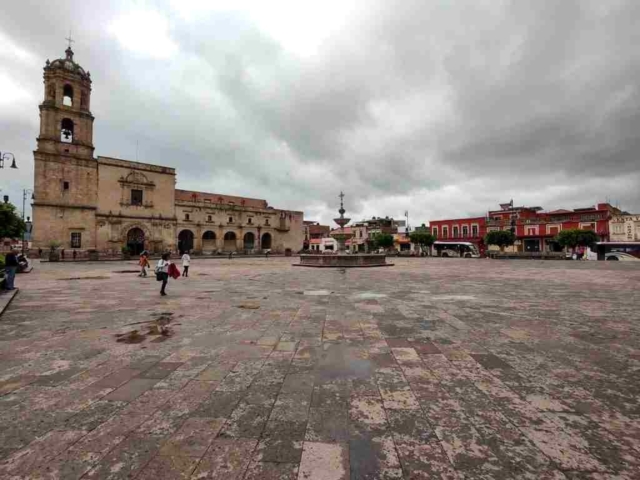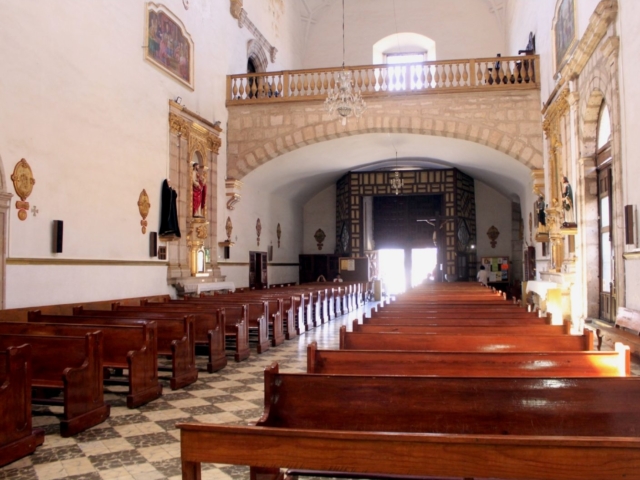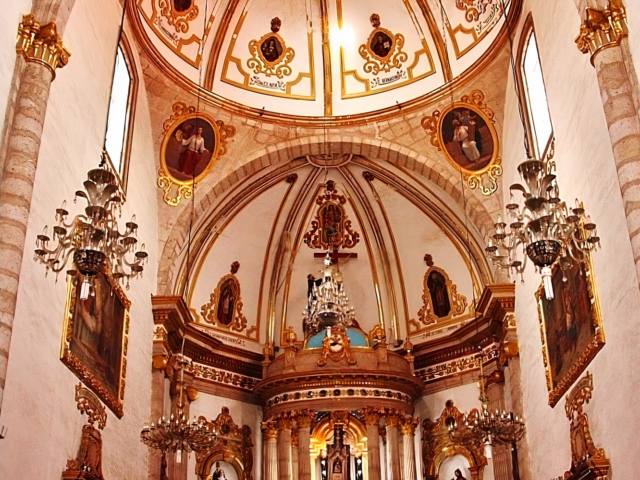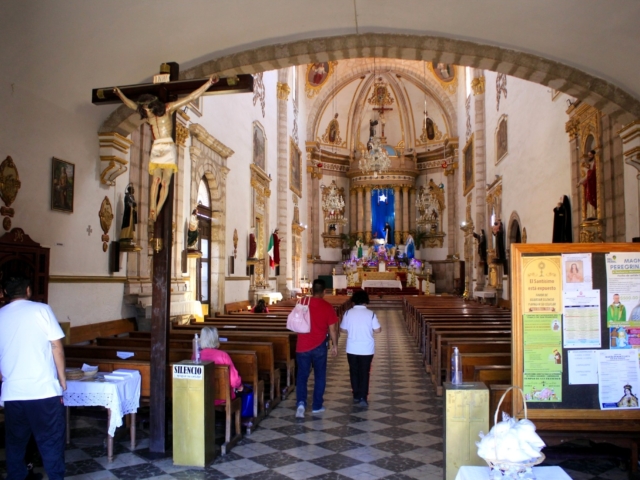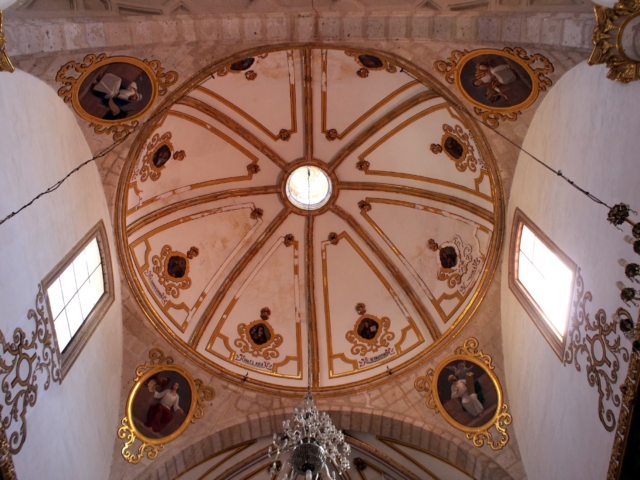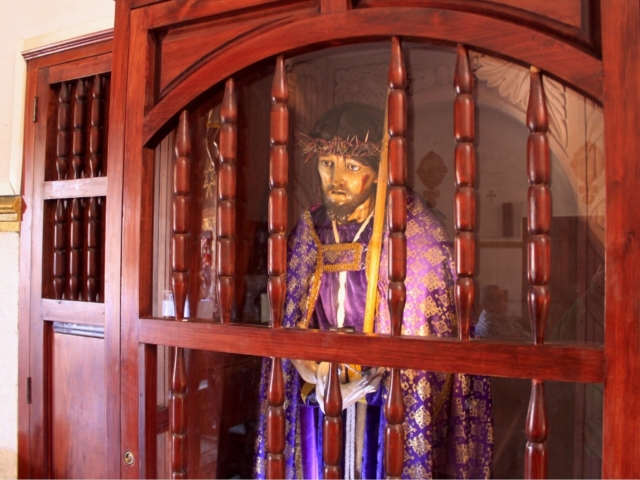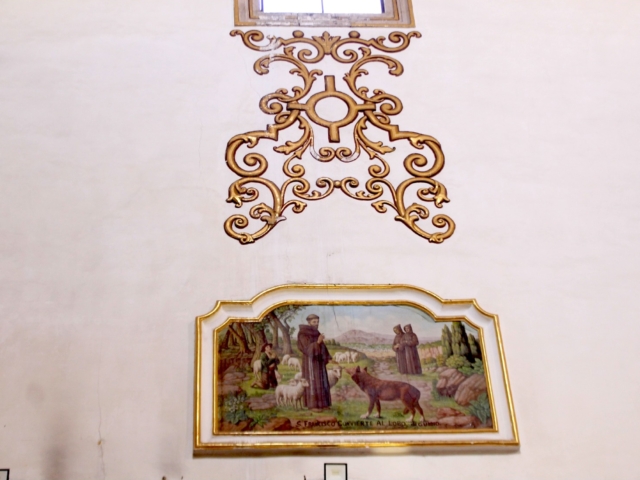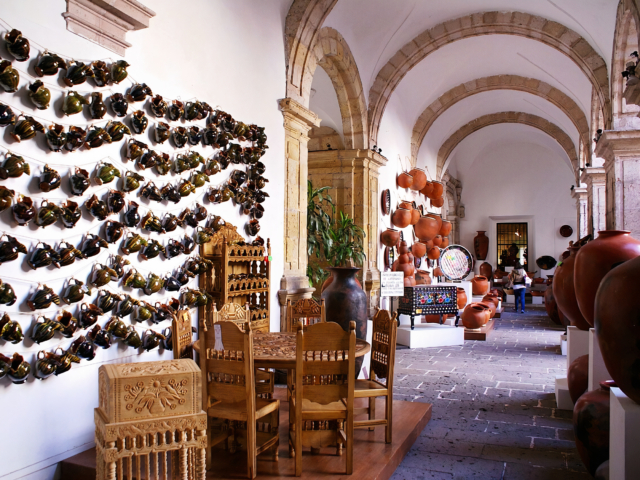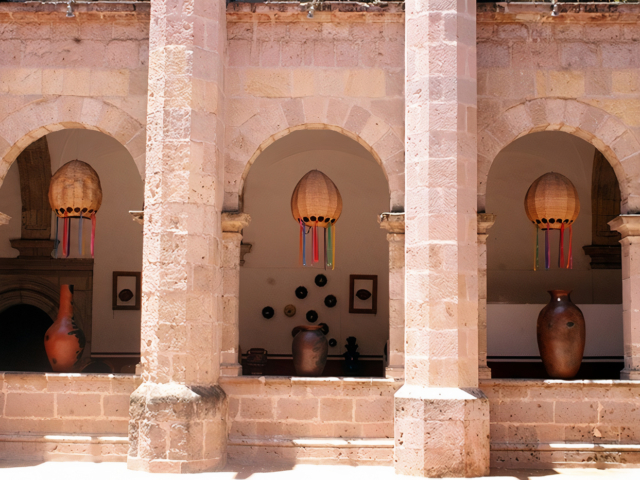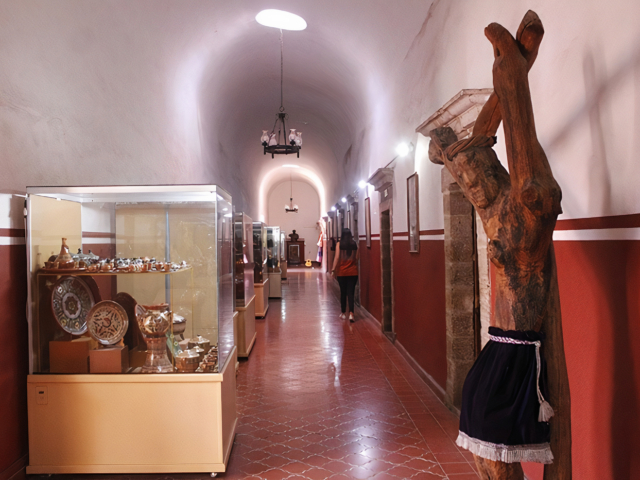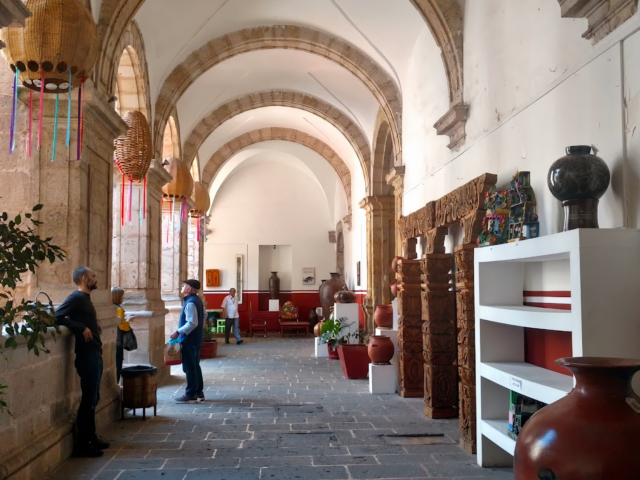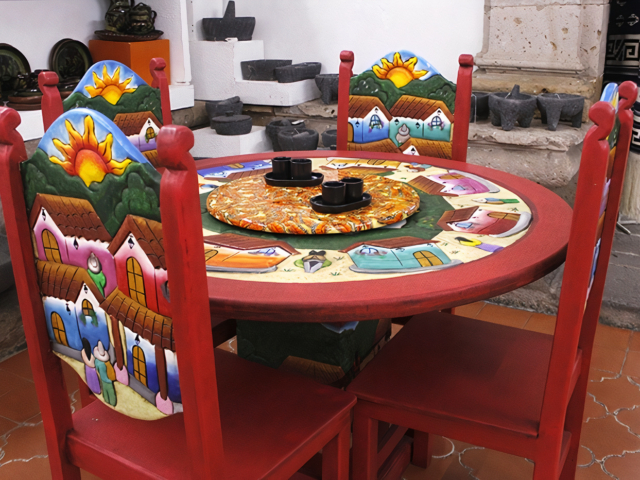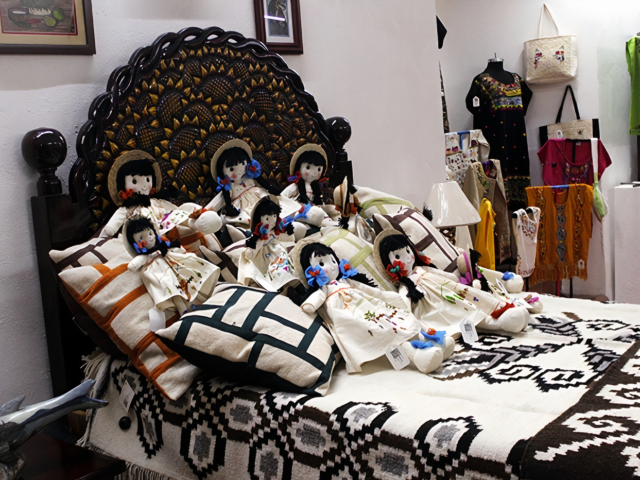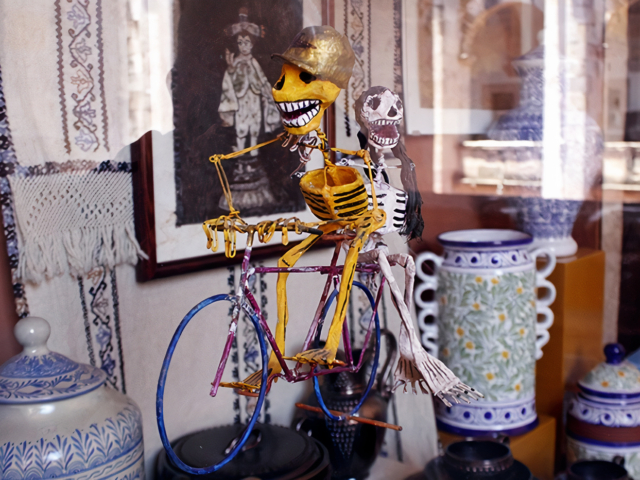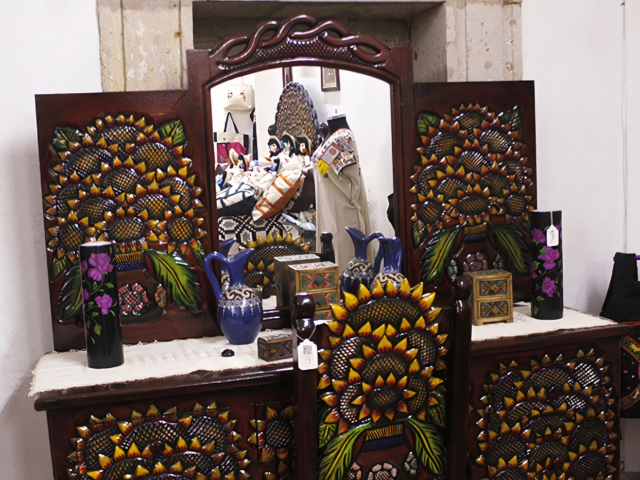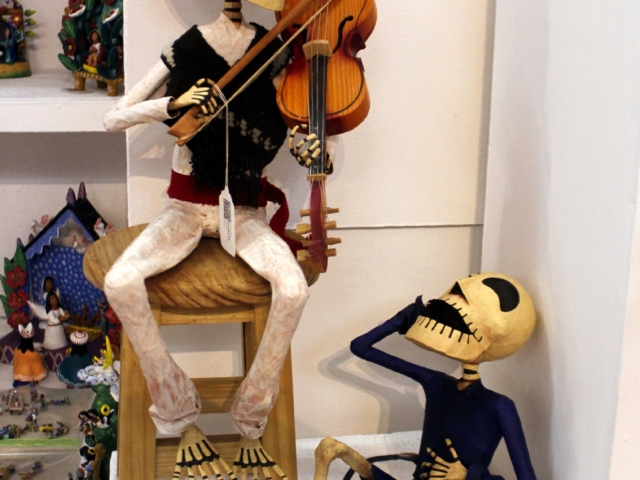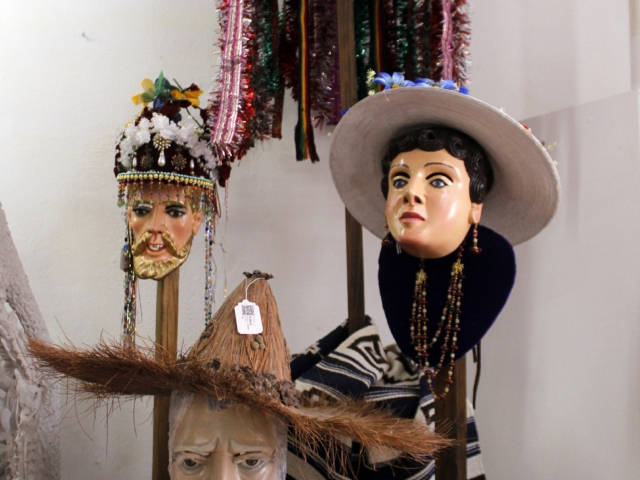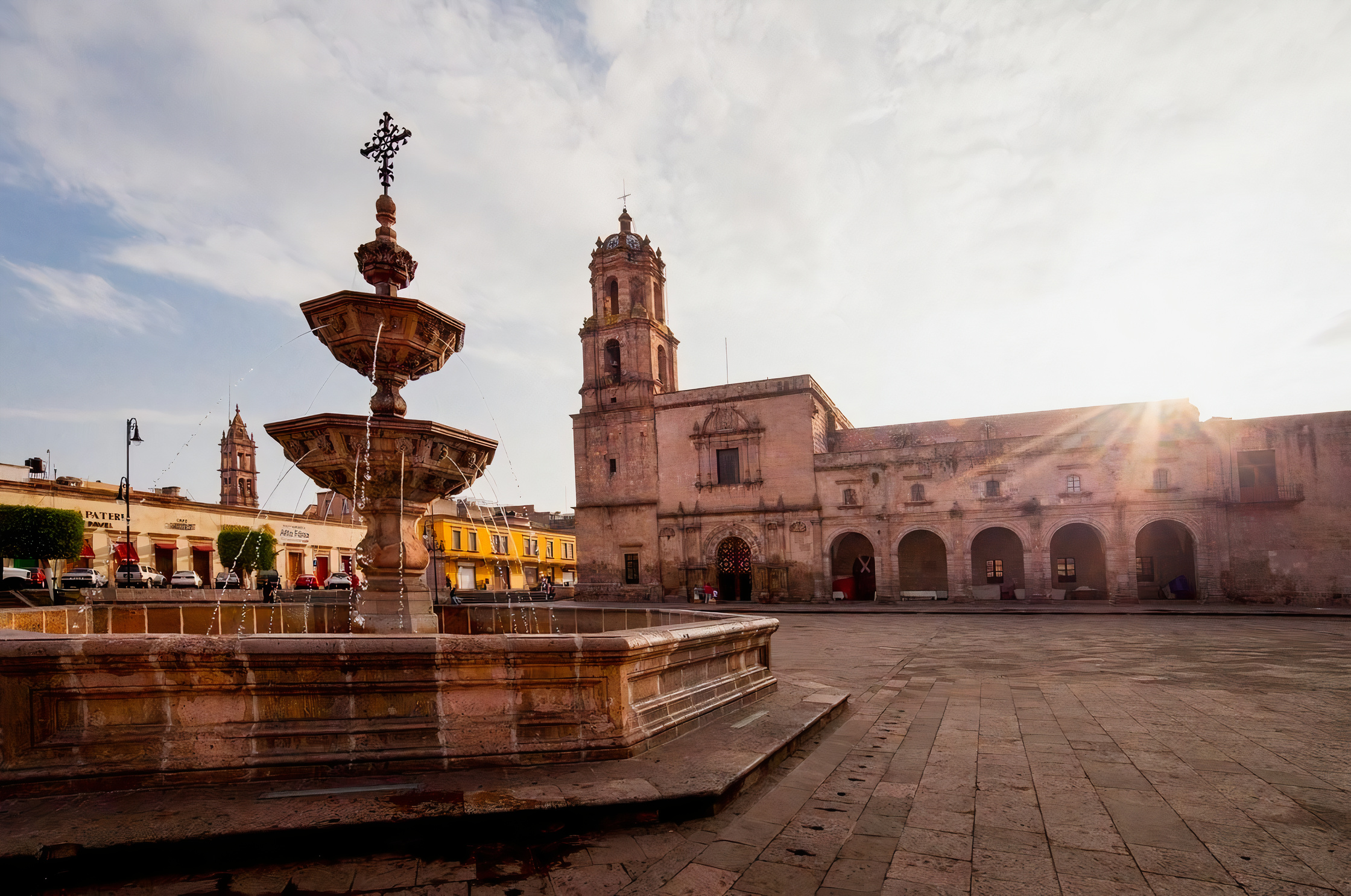
Adress
Bartolomé de Las Casas 110, Centro, 58000 Morelia, Michoacán, México.
GPS
19.701753633642, -101.18859887123
Send an Email to
Monday
09:00 – 17:00
Tuesday
09:00 – 17:00
Wednesday
09:00 – 17:00
Thursday
09:00 – 17:00
Friday
09:00 – 17:00
Saturday
09:00 – 17:00
Sunday
09:00 – 17:00
KNOW MORE PLACES
VISITA OTRAS LOCALIDADES
During the 19th and 20th centuries, it was assumed that the temple of San Francisco and its convent, that of San Buenaventura, were the oldest buildings in the Guayangareo Valley. In 1991, a study called The Origins of Guayangareo-Valladolid, by Doctor Carlos Herrejón Peredo, was published. This book, which won a prize in the competition on the occasion of the 450th anniversary of the founding of the city, is a critical analysis of all the sources available for the study of the origin of Morelia.
This book rules out the foundation of the convent and the temple of San Francisco as being prior to 1541, and also shows that before 1543, there are no mentions of any of these buildings, or even of the establishment of brothers of the Franciscan order in the valley. Due to the controversies and criticisms that this work aroused, it was necessary to produce a second edition, around the year 2001, enriched with more material about the prehistoric people of the valley, as well as two invaluable maps for interpreting the neighborhoods that shaped the city.
In short: The bronze plaques and the mural that allude to the fact that the convent and temple of San Francisco in Morelia date back to 1531 are not verifiable. Nor is the assumption that the city was founded on that site. They are the oldest temple and convent in the city, but their last reconstruction began in 1585 and ended in 1610, and even earlier, their initial construction dates back to early 1543.
History
Between May 1541 and the end of 1543, the Spaniards who had settled in the valley of Guayangareo and the slaves and Indians who accompanied them, founded with the name of Ciudad de Michoacán, were cared for by some of the Franciscan brothers who cared for Charo or those of Tarímbaro, but they did not have a member of the regular or secular clergy for their religious needs.
Between 1543 and 1579, there was already a primitive chapel and a convent made of flimsy materials, that is, not durable, such as adobe, plant fibers and wood. With the refoundation of the city that took place between 1579 and 1581, the number of Spaniards in the area grew, other religious orders moved in and there was a greater amount of labor, due to the corregimientos carried out between 1580 and 1620. Thanks to this trigger of human capital, it was possible that between 1585 and 1610 works were carried out such as the construction of a building with durable materials, and for this purpose the quarry to the north of the valley was used. However, its tower remained unfinished until 1948, which is why the temple was known as 'San Francisco Torresmochas'.
An important part of the integration of both Spaniards and indigenous people and mulattoes was the sense of belonging, and for this reason the brotherhoods, such as those of the Third Order of Saint Francis or of Our Lady of the Rosary, were established in the Franciscan complex. That of Our Lady of the Rosary was established in 1586, and by the 18th century they already had a private altar, that of the Porciúncula Chapel, which was located to the north of the current temple.
In the 17th and 18th centuries, and part of the 19th century, the appearance of the Franciscan complex changed in some characteristics, but it had its atrial wall, with its side doors, in addition to the 14 votive chapels built into the same wall, which surrounded the cemetery and the atrium, which covered the area of the current Valladolid square. It is likely that since the 17th century it already had the Porciúncula chapel attached to it, but the temple of the Third Order dates from the 18th century, it was built towards the south-west of the complex, approximately at the height of Humboldt Street, between Vasco de Quiroga and Pablo Beahumont, without covering the length between these streets.
With the reform laws and the intervention of the clergy's assets, from 1859 onwards the orchards and properties of the Church were divided, that is, of the secular and also of the regular clergy. Even though the Temple of the Third Order did not fall within the provisions of the reform laws, it was also affected, and in fact it was destroyed at the same time as the atrial wall was demolished and the Franciscan orchard was divided up. The cemetery of the order was closed, and a plaza was built in its place. The quarry from the temple of the Third Order was used to rebuild the Ocampo Theater (at least one of the bells of that theater was also extracted from the temple), and of the annex building, where the remains of Mariano Matamoros rested from 1814 to 1824, only the lintel of the door remains (on Vasco de Quiroga Street). In that place there are two plaques alluding to the insurgent Mariano Matamoros. Also buried in the Temple of the Third Order was José Mariano Elízaga Prado, the Mexican Mozart, the first great Mexican composer of the 19th century. The whereabouts of his remains are unknown.
On the north face of the temple we can see remains of the Porziuncola Chapel (small piece of land in Latin), where the Virgin, Our Lady of the Rosary, was venerated by the members of her brotherhood.
Around 1872, a market was built in the plaza that was the site of the cemetery and the Third Order, and it was later remodeled. This market was originally located in the Plaza de la Paz, or Plaza Melchor Ocampo, which was originally known as the plaza of the cathedral works, or simply the atrium and cemetery of the cathedral, due to its proximity to the atrial wall and the cemetery. This market existed in the Plaza Constitución from 1872 until 1971, when it was relocated to the Mercado Independencia, south of San Francisco. Since then, there has been the Plaza Valladolid, designed by the architect Manuel González Galván.
During the 1980s and 1990s, the plaza was invaded by merchants with semi-permanent and street stalls, first selling handicrafts, and then with contraband products popularly known as fayuca. In 2001, the army unexpectedly removed all street vendors from the historic center of the city, relocating them to plazas created for this purpose. Since then, the plaza has been the scene of various commercial and cultural activities, such as concerts, plays, fairs of various typical foods of Michoacán, etc. The temple and the plaza are part of the lighting plan, with stage lighting.
The convent has its own particular history: acquired by the Belgian engineer Guillermo Wodon de Sorinne, he tried to use it as a house for single men, under the name of La Casa de Oro, but he did not achieve his goal. He created the first Masonic temple in Morelia in the former convent, but it was destroyed in the so-called Riot of Padre Cavero. When his dream did not come true, he mortgaged part of the property to the Public Charity and rented the rest for commercial uses. It was a tenement, a house for some peasant group, and finally in 1972 it was used as the House of the Michoacan Artisan, today the House of Crafts, with museum rooms and others enabled as direct sales points for the many crafts originating in Michoacán.

